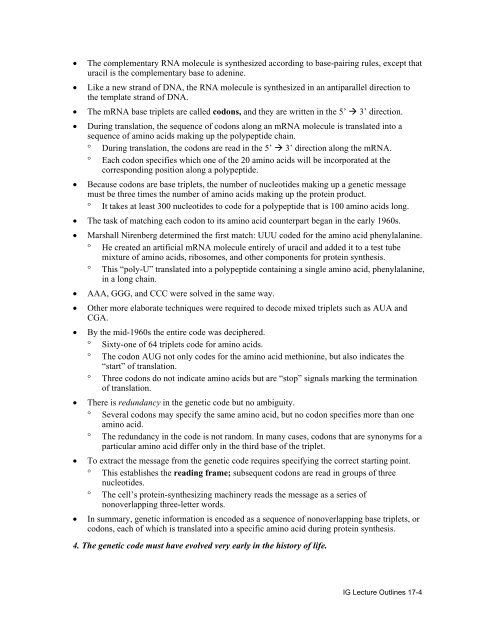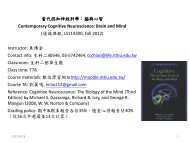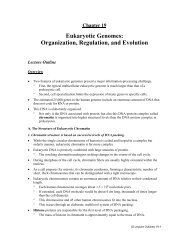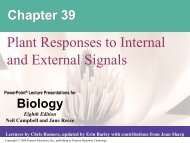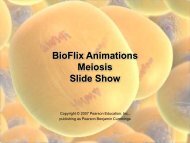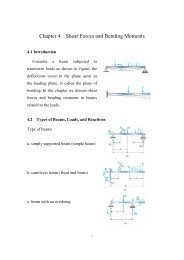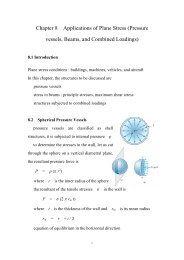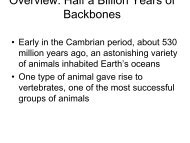CHAPTER 17 FROM GENE TO PROTEIN
CHAPTER 17 FROM GENE TO PROTEIN
CHAPTER 17 FROM GENE TO PROTEIN
- No tags were found...
Create successful ePaper yourself
Turn your PDF publications into a flip-book with our unique Google optimized e-Paper software.
• The complementary RNA molecule is synthesized according to base-pairing rules, except thaturacil is the complementary base to adenine.• Like a new strand of DNA, the RNA molecule is synthesized in an antiparallel direction tothe template strand of DNA.• The mRNA base triplets are called codons, and they are written in the 5’ 3’ direction.• During translation, the sequence of codons along an mRNA molecule is translated into asequence of amino acids making up the polypeptide chain.° During translation, the codons are read in the 5’ 3’ direction along the mRNA.° Each codon specifies which one of the 20 amino acids will be incorporated at thecorresponding position along a polypeptide.• Because codons are base triplets, the number of nucleotides making up a genetic messagemust be three times the number of amino acids making up the protein product.° It takes at least 300 nucleotides to code for a polypeptide that is 100 amino acids long.• The task of matching each codon to its amino acid counterpart began in the early 1960s.• Marshall Nirenberg determined the first match: UUU coded for the amino acid phenylalanine.° He created an artificial mRNA molecule entirely of uracil and added it to a test tubemixture of amino acids, ribosomes, and other components for protein synthesis.° This “poly-U” translated into a polypeptide containing a single amino acid, phenylalanine,in a long chain.• AAA, GGG, and CCC were solved in the same way.• Other more elaborate techniques were required to decode mixed triplets such as AUA andCGA.• By the mid-1960s the entire code was deciphered.° Sixty-one of 64 triplets code for amino acids.° The codon AUG not only codes for the amino acid methionine, but also indicates the“start” of translation.° Three codons do not indicate amino acids but are “stop” signals marking the terminationof translation.• There is redundancy in the genetic code but no ambiguity.° Several codons may specify the same amino acid, but no codon specifies more than oneamino acid.° The redundancy in the code is not random. In many cases, codons that are synonyms for aparticular amino acid differ only in the third base of the triplet.• To extract the message from the genetic code requires specifying the correct starting point.° This establishes the reading frame; subsequent codons are read in groups of threenucleotides.° The cell’s protein-synthesizing machinery reads the message as a series ofnonoverlapping three-letter words.• In summary, genetic information is encoded as a sequence of nonoverlapping base triplets, orcodons, each of which is translated into a specific amino acid during protein synthesis.4. The genetic code must have evolved very early in the history of life.IG Lecture Outlines <strong>17</strong>-4


